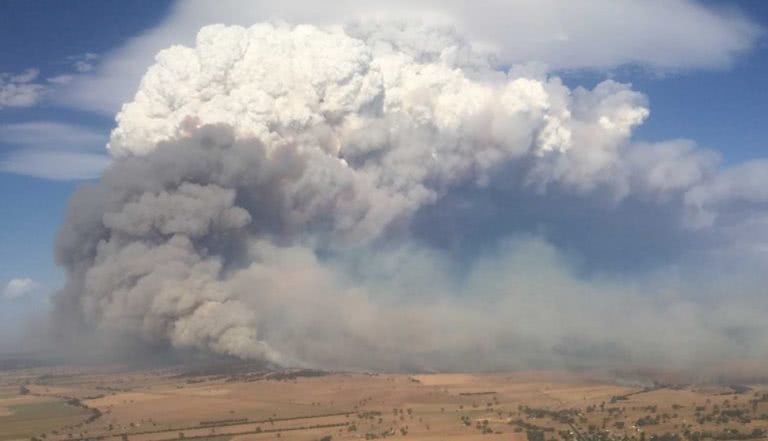The Australian bushfires have been burning since September. We’ve all steadily become accustomed to living under dirty skies filled with nasty pollutants.
The air pollution created by the transport of smoke plumes has led to unprecedented demand for P2 facemasks. And NASA is predicting the smoke produced by these fires will complete at least one full orbit of the Earth.
The smoke levels are rivalling the “largest values ever recorded,” says NASA’s Colin Seftor. The intensity of the bushfires has also brought about an unusually high number of fire-induced thunderstorms. “They are triggered by the uplift of ash, smoke, and burning material via super-heated updrafts,” says NASA.
The storms have sent the smoke into the stratosphere, which enables it to travel thousands of kilometres. It’s already travelled as far as South America and is set to make it all the way back to Australia.
Watch: Bushfire smoke continues to cover Australian cities
While media attention has subsided somewhat, bushfires continue to burn in many parts of Australia. And it’s not even February, which is often the worst month of the bushfire season.
We’re under-resourced to combat these fires. Prime Minister Scott Morrison promised extra reinforcements, but they’re not as easily procured as he tried to make out. Saturday Paper journalist Rick Morton told the 7am podcast that many fireys are doubtful about whether the prevailing system is capable of getting us through the next fire season.
Love Music?
Get your daily dose of metal, rock, indie, pop, and everything else in between.
“The Prime Minister announced we had leased another two aerial aircraft,” said Morton. “We spent another $20 million on those leases to bring extra ones over to Australia. And they were on their way up until fairly recently when they got diverted by another global catastrophe.
“As far as we know they have not even arrived in Australia yet. That whole scenario has taught us that we were not prepared.”


































